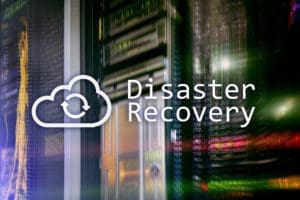 Thanks to concerns about cybersecurity and increased complexity with the data environment itself, a report published today by Future Market Insights predicts the Disaster Recovery-as-a-Service (DRaaS) market will grow in the U.S. from $2.45 billion to $8.4 billion by 2021.
Thanks to concerns about cybersecurity and increased complexity with the data environment itself, a report published today by Future Market Insights predicts the Disaster Recovery-as-a-Service (DRaaS) market will grow in the U.S. from $2.45 billion to $8.4 billion by 2021.
That dramatic uptake is being driven by the realization that there is no longer a good excuse for applications to ever be offline. DRaaS makes it possible to have stand by applications residing in the cloud or another data center. As soon as there’s an issue with any application, an IT organization can bring standby copies of those applications online. All that needs to occur, is that the clients trying to access those applications need to be given the new IP address informing them where to find them. DRaaS used to be something only the most well-heeled IT organizations could afford. In the age of the public cloud, the cost of DRaaS has dropped to the point where it’s much more accessible to the average IT organization.
DRaaS doesn’t eliminate the need to replicate and backup data. However, it does give MSPs an opportunity to layer an additional set of services on top of the data management capabilities being already provided. These days there’s clearly a lot of interest in moving workloads to the cloud, yet most IT organizations will clearly be managing local data centers for many years to come. In some cases, they may own that data center. In other cases, the data center will consist of racks of equipment hosted in a co-location facility. Regardless of location, there will be unplanned downtime. The only real unknown is for how long.
Avoiding repeated DRaaS mistakes
High availability and disaster recovery are always on the minds of senior IT executives. Bonuses for IT executives are still often tied to not only application availability, but also how quickly the IT organization can recover from a disaster. As the New Year approaches, many IT executives will be keen to make sure whatever mishap that occurred in the past year doesn’t manifest itself again in 2019. In fact, a recent survey conducted by the research firm Uptime notes that nearly one-third of respondents experienced a data center outage in the past year, up from 25 percent from the year before. The top three causes of that downtime were power outages (33 percent), network failures (30 percent), and IT or software errors (28 percent).
All of this means that there’s no better time for managed service providers (MSPs) to have a conversation with customers about how far DRaaS has come. Most IT leaders would rather spend their time trying to drive value and innovation into the business. Worrying about high availability takes time away from driving innovation. Many IT leaders also know in their hearts they are not especially good at backup and recovery, let alone trying to implement a DRaaS strategy. The good news is DRaaS has reached a level of maturity that enables MSPs to turn this function into a true managed service on behalf of hundreds of potential customers. Hopefully, MSPs will be having that DRaaS discussion long before anything truly catastrophic occurs. Either way, MSPs can rest assured there will be an attentive audience.
Photo: Funtap/Shutterstock
